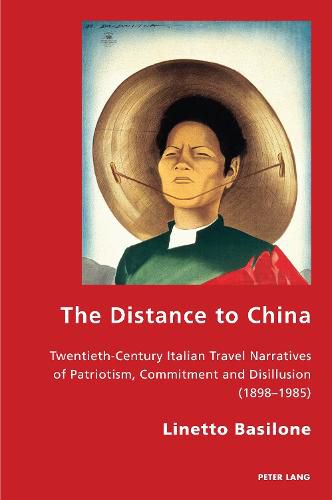Readings Newsletter
Become a Readings Member to make your shopping experience even easier.
Sign in or sign up for free!
You’re not far away from qualifying for FREE standard shipping within Australia
You’ve qualified for FREE standard shipping within Australia
The cart is loading…






This title is printed to order. This book may have been self-published. If so, we cannot guarantee the quality of the content. In the main most books will have gone through the editing process however some may not. We therefore suggest that you be aware of this before ordering this book. If in doubt check either the author or publisher’s details as we are unable to accept any returns unless they are faulty. Please contact us if you have any questions.
<>
(Charles Burdett, Director, Institute of Languages, Cultures and Societies, University of London)
?
Over the course of the twentieth century, China became a destination of choice for hundreds of the most prominent Italian writers, journalists, and politicians. Informed by the cultural, economic, and political relationship between Italy and China since the late 1890s, the travel narratives of these authors contributed to the creation of multiple and varied representations of the country. This book fills a gap in the study of the development of Italian travel narratives on twentieth-century China. It classifies the major portraits of China under five chronologically and ideologically ordered types of representation and offers readers a structured understanding of the processes of <> China in Italy. The study sheds new light on how China was associated with the specific cultural, political, and social traits of Italy and Italian culture; how it reinforced ideological indoctrination among Italian intellectual elites; and how significant such travel narratives were for the ideological orientation of the Italian readership.
The authors discussed in the book include, among others: Luigi Barzini Sr., Mario Appelius, Arnaldo Cipolla, Franco Fortini, Carlo Cassola, Curzio Malaparte, Alberto Moravia, Goffredo Parise, Maria Antonietta Macciocchi, Gianni Rodari, Luigi Malerba, Alberto Arbasino, Edoarda Masi, and Tiziano Terzani.
$9.00 standard shipping within Australia
FREE standard shipping within Australia for orders over $100.00
Express & International shipping calculated at checkout
This title is printed to order. This book may have been self-published. If so, we cannot guarantee the quality of the content. In the main most books will have gone through the editing process however some may not. We therefore suggest that you be aware of this before ordering this book. If in doubt check either the author or publisher’s details as we are unable to accept any returns unless they are faulty. Please contact us if you have any questions.
<>
(Charles Burdett, Director, Institute of Languages, Cultures and Societies, University of London)
?
Over the course of the twentieth century, China became a destination of choice for hundreds of the most prominent Italian writers, journalists, and politicians. Informed by the cultural, economic, and political relationship between Italy and China since the late 1890s, the travel narratives of these authors contributed to the creation of multiple and varied representations of the country. This book fills a gap in the study of the development of Italian travel narratives on twentieth-century China. It classifies the major portraits of China under five chronologically and ideologically ordered types of representation and offers readers a structured understanding of the processes of <> China in Italy. The study sheds new light on how China was associated with the specific cultural, political, and social traits of Italy and Italian culture; how it reinforced ideological indoctrination among Italian intellectual elites; and how significant such travel narratives were for the ideological orientation of the Italian readership.
The authors discussed in the book include, among others: Luigi Barzini Sr., Mario Appelius, Arnaldo Cipolla, Franco Fortini, Carlo Cassola, Curzio Malaparte, Alberto Moravia, Goffredo Parise, Maria Antonietta Macciocchi, Gianni Rodari, Luigi Malerba, Alberto Arbasino, Edoarda Masi, and Tiziano Terzani.